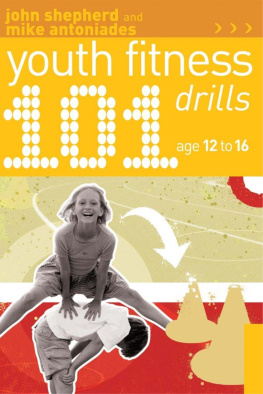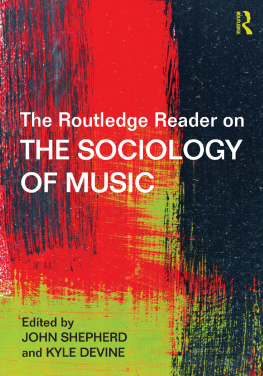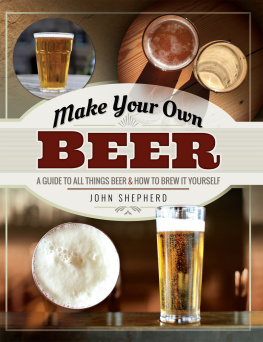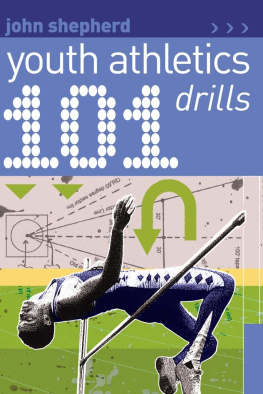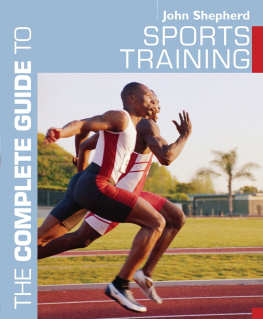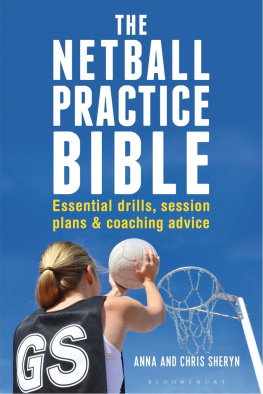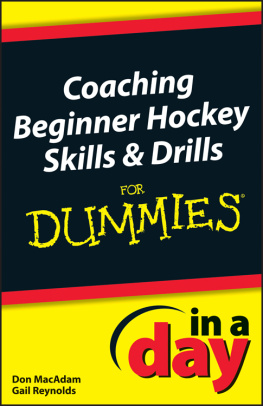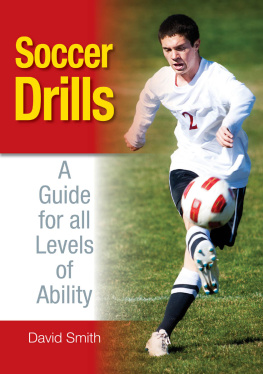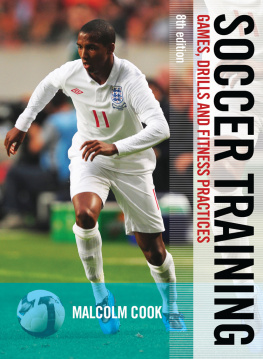
ABOUT THE AUTHORS
John Shepherd
John Shepherd is the editor of ultra-FIT magazine and a freelance writer. He has written five other bestselling fitness and sports books, including The Complete Guide to Sports Training and 101 Youth Athletics Drills. He is a former international athlete and coaches athletes to international standard. He still competes at masters level at sprints and long jump and has won numerous national, European and World medals.
John has also worked for local authorities in sports development, where he puts into practice many of the drills in this book.
Mike Antoniades
Mike is the founder and coaching director of Sport Dimensions and The Running School. He is an innovative coach and an expert in speed and strength training, and rehabilitation after injury or surgery.
His reputation as a coach has seen him work with professional and elite sportspeople in football, rugby and athletics from teams such as Chelsea, Tottenham, Fulham, Blackburn, and England rugby internationals. He has worked with TV personalities and recreational athletes and has experience of working with young people in school and sports clubs.
Mike has been featured in numerous newspapers and magazines for his work with elite athletes and football clubs, such as Running Fitness, The Times, Mirror, Daily Mail, Daily Telegraph and Peak Performance. His training techniques have also been highlighted on the BBC Sports Academy.
He is also the author of a DVD on developing speed in football called Feel the Speed and runs workshops on fitness and speed development in the UK, Europe and the USA.
Putting theory into practice
Together John Shepherd and Mike Antoniades run courses designed to bring the drills and exercises in these and their other books to the attention of teachers and coaches. For further information go to: www.sportsdimensions.com
The warning signs
More than a quarter of children in secondary schools in England are obese thats double the number from 10 years ago. These figures, alarming as they are, become even more so when you learn that, for the National Obesity Forum, this constitutes a public health time bomb which will see obese teenagers twice as likely to die by the age of 50.
If overweight young people are added to the numbers who are obese, then a staggering 46% of girls and 30.5% of boys are overweight or obese.
We hope that 101 Youth Fitness Drills will help to improve this alarming situation.
The recommendations
Officially the Chief Medical Officer recommends that young people aged 518 do at least 60 minutes of moderate activity each day. Twice a week this hour should include activities to improve muscle strength, flexibility and bone health (this would include running and jumping, dance classes and resistance exercise).
We believe that young people need two or three hours of physical activity every day! At least 60 minutes should be in bursts of high intensity games, running, jumping. All of it should be fun. So it is up to us as parents, teachers and coaches to start educating our children and give them the tools for leading healthy, active lives.
Government reports estimate that by 2050, 90% of the population will be obese. Thats a shocking statistic. It seems future generations and some of todays children are doomed to live less healthy and shorter lives.
Adolescents often develop a rebellious nature and tend not to want to do anything that might be good for them. Sport and exercise for many is off their radar. However, if they want to be healthy they need to achieve a life-long awareness of the benefits of exercise. Our sister book 101 Fitness Drills Age 711 introduces fundamental physical skills to children in an enjoyable way and in this book, for the 1216 age range we aim to do the same.
A generation ago children played much more actively and with greater freedom. Today, concerns over health and safety at school and in the wider community, coupled with the twin malaises of the twenty-first century poor diet and a lack of exercise have led to huge actual and potential health concerns. Indeed the term globesity has been coined to describe the problem. For 1216-year-olds the maturation process brings physical and emotional changes that will often influence physical activity, both positively and negatively. It is crucial that teachers, coaches and parents try to influence rather than force a need to be active among this age group. It is important, particularly with the older children, to give them ownership and empowerment. They may come up with new activities or variations to the drills in this book this is not to be discouraged as long as they are safe.
Through our own experiences and attendance of numerous coaching courses over the years, and through talking with coaches from many sports, we know that not only are many young people unhealthy, but they are also unable to perform basic physical skills that would make them better at playing sports. Turning and spinning through 180 or 360 degrees, for example, is a skill many children lack a skill that is crucial for sports such as football and tennis, and the track and field discus throw. This book provides an array of largely game-based drills and practices which will help a child improve, whatever their sport. Hopefully and crucially in taking part in these drills, the child will be learning in a way that does not seem like learning. We want children to be having fun as they become more skilled, more body aware, faster, better coordinated and, above all, fitter.
John Shepherd | Mike Antoniades |
Although we have written this book to produce more confident and physically gifted children, our primary aim is to stimulate an interest in being active, regardless of whether a child wants to be a sportsman or woman in the future. In short, we want to encourage a healthy and active lifestyle. This is in slight contrast to the other 101 Drills books in the series because these are aimed at giving children specific skills in, for example, rugby, netball or athletics. Although all the drills in this book will help build sports skills, they have also been selected because they are fun to do. Many are as much games as they are drills.
For many of us who are of a certain age, they will bring back memories of being scouts or guides or of our PE lessons when we played dodge ball and British bulldogs, and ran through obstacle courses. These are activities that involve a variety of valuable sports and fitness skills, but are great fun to do. It is far better to get children active and improving their physical ability without them really knowing it, than by being too formal.
your role
To make fitness fun, your role as teacher, parent or coach, is very important. You must be enthusiastic about the activities you are leading and you must be inclusive, encouraging and creative. With children aged 1216 youll probably find that interest levels vary considerably. These children are becoming increasingly self-aware and peer pressure will be an issue. Its likely, then, that there will be children in your care who are less inclined to want to take part. You should keep an eye out for them and alter the way you present your session to help them feel more confident about taking part. Obviously if you have any health concerns about any children, they should not participate or continue with the session although we are sure this will be very rare. You should be aware of specific health needs, preferably before taking the session. Preventing a child from doing an activity in the heat of the moment, because of their weight, for example, could be detrimental to their self-esteem.
Next page
